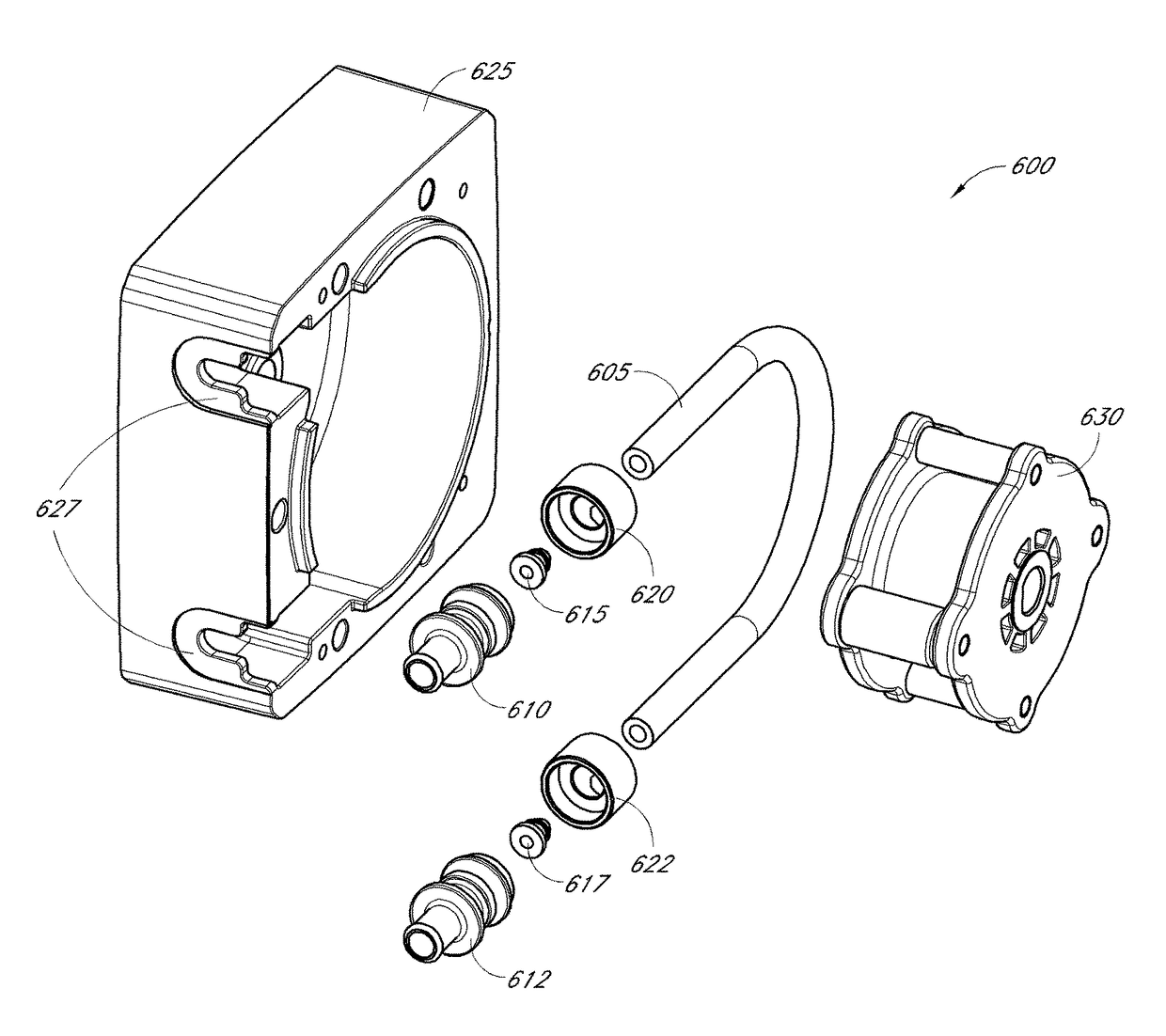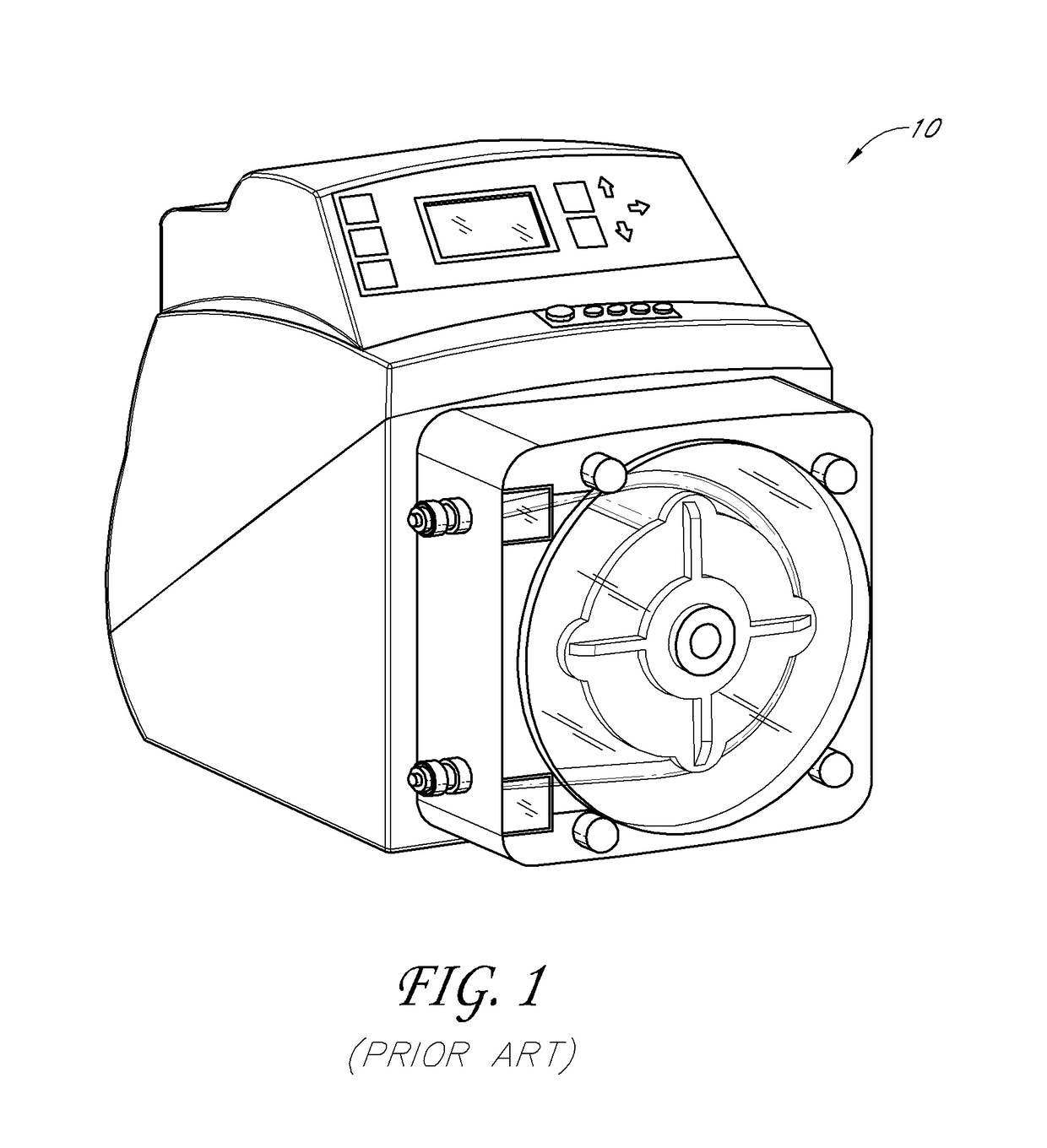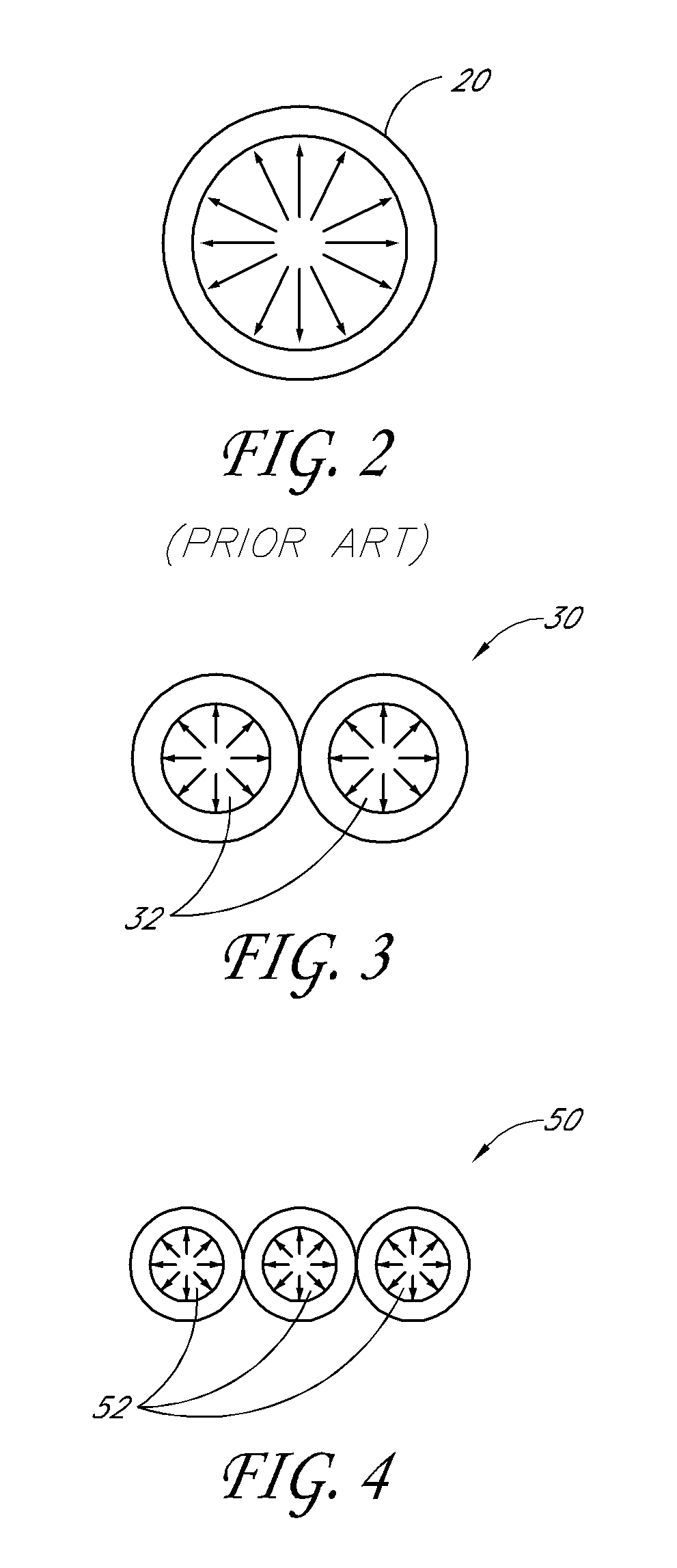High pressure, high flow rate tubing assembly and adapter for a positive displacement pump
a technology of tubing and positive displacement, which is applied in the direction of positive displacement liquid engines, flexible member pumps, machines/engines, etc., can solve the problems of high system pressure and chemical flow rate, high cost of operation of peristaltic hose pumps, and high corrosion resistance of assemblies, etc., to achieve high flow rate, increase drive efficiency, and increase the life of tubes
- Summary
- Abstract
- Description
- Claims
- Application Information
AI Technical Summary
Benefits of technology
Problems solved by technology
Method used
Image
Examples
second embodiment
[0105]the assembly is shown in FIG. 27B. In this embodiment, the tube 205 is pressed through an opening in the tube mount 2702. A pump tubing gripper / lock 2712 is then inserted into the end of the tube 205. The pump tubing gripper / lock 2712 has a flange having a flange surface 2744 that abuts the end wall 2722 of the tube mount 2702. In some embodiments, friction between the tube 205 and the tube mount 2702 may hold the tube 205 in place without longitudinal movement. In other embodiments, adhesive or other suitable material to join the pump tubing gripper / lock 2712 to the tube mount 2702, that is, between the end wall 2722 and the flange surface 2744, may be required to prevent the tube 205 from longitudinal movement within the tube mount 2702.
third embodiment
[0106]FIG. 27C illustrates the assembly. In this embodiment, a tube 205 is pressed through an opening in the tube mount 2703. A pump tubing gripper / lock 2713 is then inserted into the end of the tube 205. In this embodiment, the pump tubing gripper / lock 2713 need not be adhered to the end wall 2735. Instead, the top flange surface 2714 of the pump tubing gripper / lock 2713 abuts against an end surface 2734 of the external system interface 2733. Similar to the embodiment shown in FIG. 26C, the tube mount 2703 abuts against the flange 2723 of the external system interface 2733.
[0107]In each shown in FIGS. 27A-C, an external system interface similar to the external system interfaces 123, 124, 125, 126 shown in FIG. 23 may be coupled to the tube mount by any of the methods discussed in greater detail above.
[0108]Embodiments of the tubing assemblies disclosed herein can be fabricated using a variety of materials, such as polymer materials, rubber, polyurethane, neoprene, tygothane, and ot...
PUM
| Property | Measurement | Unit |
|---|---|---|
| diameter | aaaaa | aaaaa |
| flow rate | aaaaa | aaaaa |
| flow rate | aaaaa | aaaaa |
Abstract
Description
Claims
Application Information
 Login to View More
Login to View More - R&D
- Intellectual Property
- Life Sciences
- Materials
- Tech Scout
- Unparalleled Data Quality
- Higher Quality Content
- 60% Fewer Hallucinations
Browse by: Latest US Patents, China's latest patents, Technical Efficacy Thesaurus, Application Domain, Technology Topic, Popular Technical Reports.
© 2025 PatSnap. All rights reserved.Legal|Privacy policy|Modern Slavery Act Transparency Statement|Sitemap|About US| Contact US: help@patsnap.com



